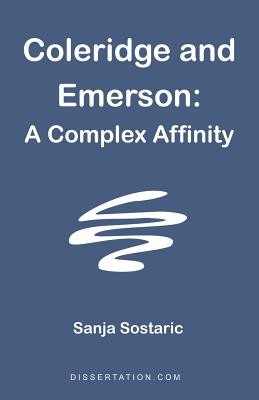
- We will send in 10–14 business days.
- Author: Sanja Sostaric
- Publisher: Dissertation.Com. - Do Not Use
- ISBN-10: 1581121997
- ISBN-13: 9781581121995
- Format: 15.9 x 22 x 2.3 cm, minkšti viršeliai
- Language: English
- SAVE -10% with code: EXTRA
Reviews
Description
This work elaborates R. W. Emerson s modification of S. T. Coleridge s central philosophical-aesthetic notions, such as imagination, reason, genius and symbol. Although Kant s and Schelling s idealistic philosophy, various pantheistic theories and Neoplatonism are identified as Coleridge s and Emerson s congenial intellectual and spiritual background, the author draws yet more attention to subtle differences between the English Romantic Coleridge and the American transcendentalist Emerson, which allow us to recognize that we deal with two distinct philosophical and poetic theories. It is shown that Emerson, neglecting flatly Coleridge's careful distinctions aimed at preserving the balance between dualism and monism, resolves Coleridge's theoretical ambiguity by exclusively concentrating on the part of Coleridge's system which favors the irrational and the unconscious dimension. As a consequence, Emerson's philosophy and aesthetics, with their emphasis on reason and imagination understood as inspiration, that is, the inflow of the divine into the mind of the artist, represent a radicalized version of Coleridge's neatly supressed monistic tendencies. In Emerson's interpretation, Coleridgean imagination becomes equated with Plotinian soul, that is, Coleridgean reason becomes a synonym for the utter mystical depersonalization. Finally, the delicate and easily overlooked Emersonian shifts with regard to Coleridge's theory point at the significance of Emerson's theoretical solutions in the transition from romanticim to modernism, a transition to which, ironically enough, Coleridge himself unintentionally and indirectly gave valuable contribution.
EXTRA 10 % discount with code: EXTRA
The promotion ends in 22d.22:20:14
The discount code is valid when purchasing from 10 €. Discounts do not stack.
- Author: Sanja Sostaric
- Publisher: Dissertation.Com. - Do Not Use
- ISBN-10: 1581121997
- ISBN-13: 9781581121995
- Format: 15.9 x 22 x 2.3 cm, minkšti viršeliai
- Language: English English
This work elaborates R. W. Emerson s modification of S. T. Coleridge s central philosophical-aesthetic notions, such as imagination, reason, genius and symbol. Although Kant s and Schelling s idealistic philosophy, various pantheistic theories and Neoplatonism are identified as Coleridge s and Emerson s congenial intellectual and spiritual background, the author draws yet more attention to subtle differences between the English Romantic Coleridge and the American transcendentalist Emerson, which allow us to recognize that we deal with two distinct philosophical and poetic theories. It is shown that Emerson, neglecting flatly Coleridge's careful distinctions aimed at preserving the balance between dualism and monism, resolves Coleridge's theoretical ambiguity by exclusively concentrating on the part of Coleridge's system which favors the irrational and the unconscious dimension. As a consequence, Emerson's philosophy and aesthetics, with their emphasis on reason and imagination understood as inspiration, that is, the inflow of the divine into the mind of the artist, represent a radicalized version of Coleridge's neatly supressed monistic tendencies. In Emerson's interpretation, Coleridgean imagination becomes equated with Plotinian soul, that is, Coleridgean reason becomes a synonym for the utter mystical depersonalization. Finally, the delicate and easily overlooked Emersonian shifts with regard to Coleridge's theory point at the significance of Emerson's theoretical solutions in the transition from romanticim to modernism, a transition to which, ironically enough, Coleridge himself unintentionally and indirectly gave valuable contribution.


Reviews